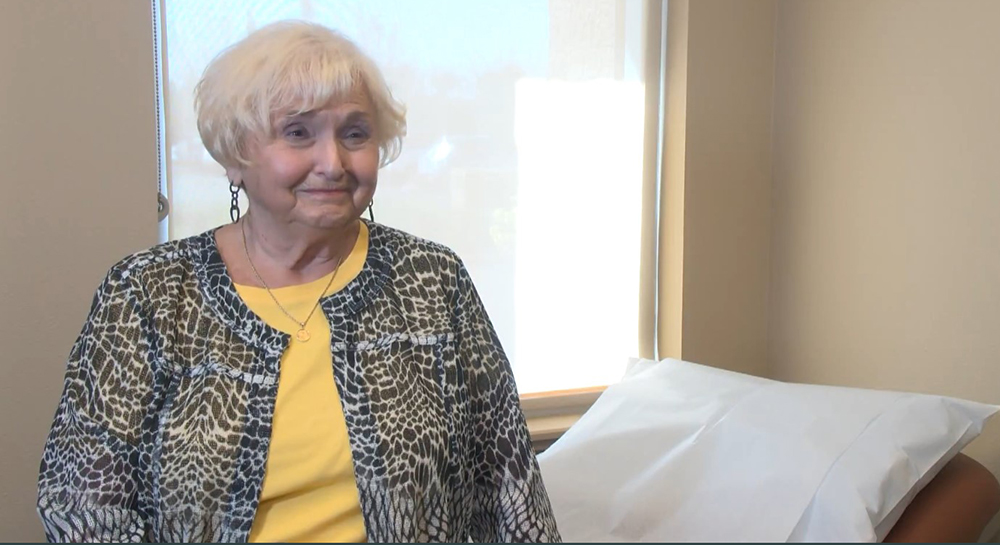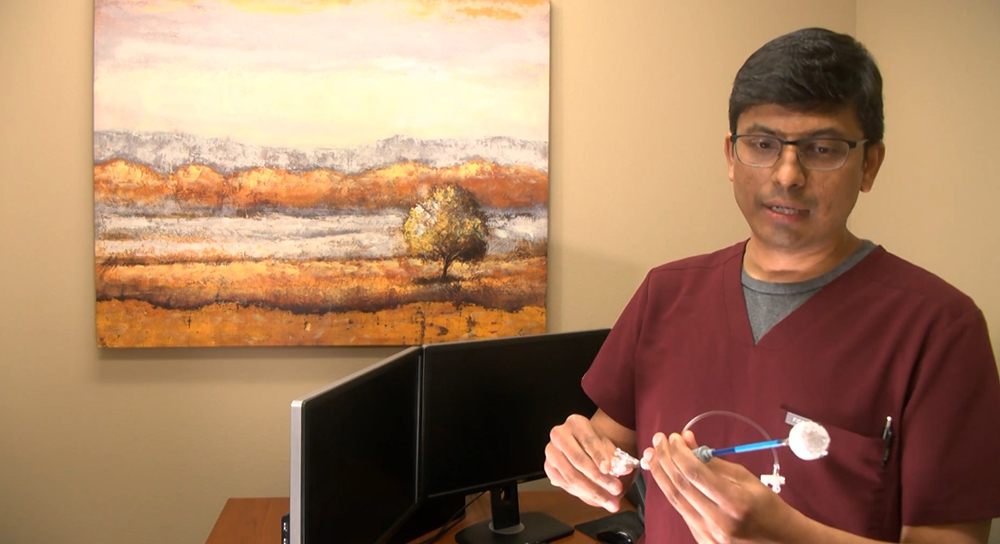At 82, Theodora Clifford feels she has years of fun left since a small balloon device was implanted in her heart. She was among the Valley’s first 100 patients to receive a Watchman to reduce her risk of stroke from atrial fibrillation, better known as an irregular heartbeat.
“I didn't have the energy that I have today,” she says. “Today I'm able to walk every day. And I feel so much better just knowing I don’t have that fear of having a stroke — and that’s all due to the Watchman.”
She called her cardiologist Chandrasekar Palaniswamy a “true pioneer” and adds, “I was just thrilled to death to get this Watchman right here in the Valley.”
Dr. Palaniswamy, along with cardiology colleagues Kevin Boran and Thampi John, did the first Watchman procedure in the Valley in February 2018, and Community Medical Centers hospitals have helped more than 170 patients so far with the Watchman.
The Watchman has life-long benefits for those with atrial fibrillation, or AFib, who may be unable to take the standard blood thinners prescribed for this condition, says Dr. Palaniswamy. “In Fresno County alone, I would say there are at least 10,000 patients with atrial fibrillation,” he says.
Irregular heartbeat increases risk of strokes
Clifford was suffering from fatigue and shortness of breath when she was referred to Dr. Palaniswamy in 2017. He discovered that an irregular heart rhythm that came and went was to blame for her shortness of breath. It also increased her risk of having a stroke.
“AFib is a common heart condition which usually affects people 50 and older,” Dr. Palaniswamy says. “It puts people at risk for strokes from blood clots that start in the heart. And it can lead to weakening of the heart. Patients can have symptoms anywhere from heart palpitations, dizziness, shortness of breath, fatigue, chest pain, or just not feeling well.”
Clifford was put on blood thinners to minimize her stroke risk, but then a year later an intracranial aneurysm was found. This bulging blood vessel in her brain placed her at risk of another kind of stroke — this one from bleeding in the brain.
Those with bleeding risks benefit from Watchman
“So while on one hand she's at a high risk for a blood clot and a stroke from atrial fibrillation, she also was at a risk for bleeding into her brain from the intracranial aneurysm,” Dr. Palaniswamy explains. “And blood thinners would increase her chances for a brain bleed.”
That made Clifford a perfect candidate for the Watchman.
In the past, patients like Clifford would have to weigh the lesser of two risks. “Blood thinners have been the standard of care for many years, but for patients who could not be on blood thinners there was no option,” Dr. Palaniswamy says.
The cardiologist is grateful to have better treatment choices available: “I feel blessed … because this was an unmet need for the patients like her who otherwise would have ended up in a bad outcome if this was not available. There are a fair number of patients who cannot take blood thinners.”
How Watchman works
The Watchman is a small balloon-like device that seals off an area in the heart that’s problematic for patients with atrial fibrillation.
 Dr. Palaniswamy explains: “About 20 years ago we found out these blood clots from atrial fibrillation start in a part of the heart called the left atrial appendage. This is a small structure that comes off the left side of the heart. This structure is not a problem unless you have atrial fibrillation and 90% of blood clots form here.”
Dr. Palaniswamy explains: “About 20 years ago we found out these blood clots from atrial fibrillation start in a part of the heart called the left atrial appendage. This is a small structure that comes off the left side of the heart. This structure is not a problem unless you have atrial fibrillation and 90% of blood clots form here.”
He uses a long thin tube, or catheter, inserted in the groin to guide the tiny deflated Watchman up through the arteries into the heart, and then inflates the Watchman into the left atrial appendage area.
“Once we enter the spot where we need to place it, the device is deployed so it opens up, and we tug on it and we make sure this is well sealed without any leak around it,” describes Dr. Palaniswamy. “Once we are happy with this then we release it and leave the device in place … then the heart tissue grows over it and it’s completely sealed off.”
Patients are able to go home the next day after the minimally invasive procedure. Clifford remembers the two-hour procedure as being easy and without pain.
“Everything went very well with me and it’s been in now for almost two years and it’s just perfect, just perfect,” she declares.
Watchman provides ‘peace of mind’
About six weeks after the Watchman is inserted, cardiologists go back to check that it’s still in place and the heart has grown closed around it. They use a long camera inserted through the throat to do a trans-esophageal echocardiogram. At that point, Dr. Palaniswamy says, AFib patients can ditch their blood thinners.
Dr. Palaniswamy adds, “The Watchman device is as good as being on a blood thinner. This device was compared to Warfarin, which is a blood thinner, and the Watchman was found to be at least as good in clinical trials.”
Clifford urges others not to hesitate to get a Watchman “because it’s well worth it.”
“The peace of mind of not having a stroke is just immense,” she says. “I can’t tell you how immense it is to not have that fear. I can walk and workout and not worry about my heart.”






